Air carnation or Tillandsia / Clavel de aire o Tillandsia
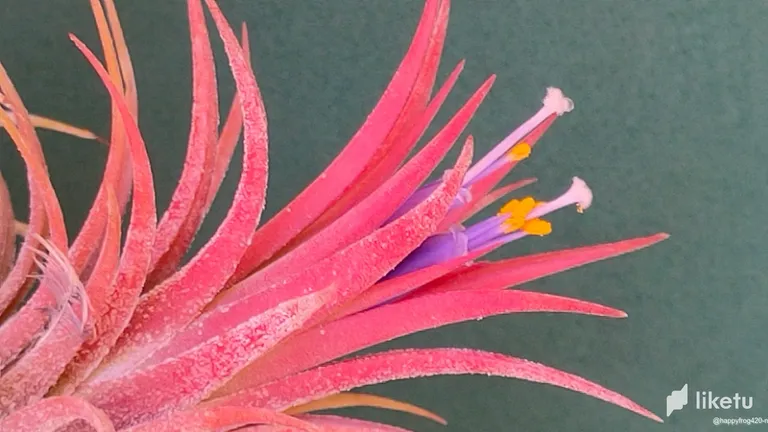
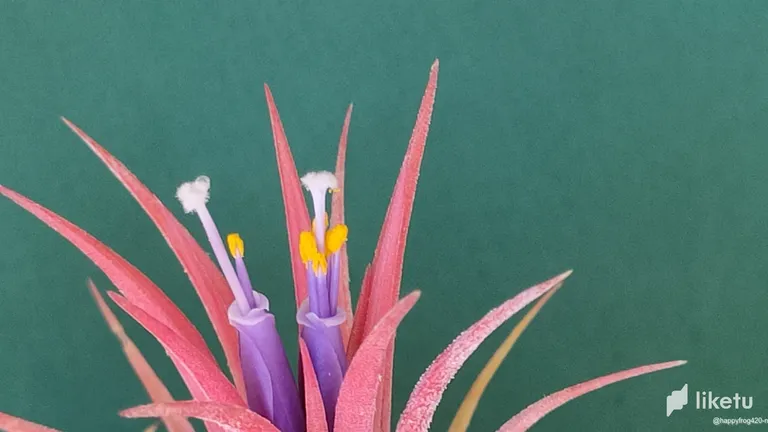
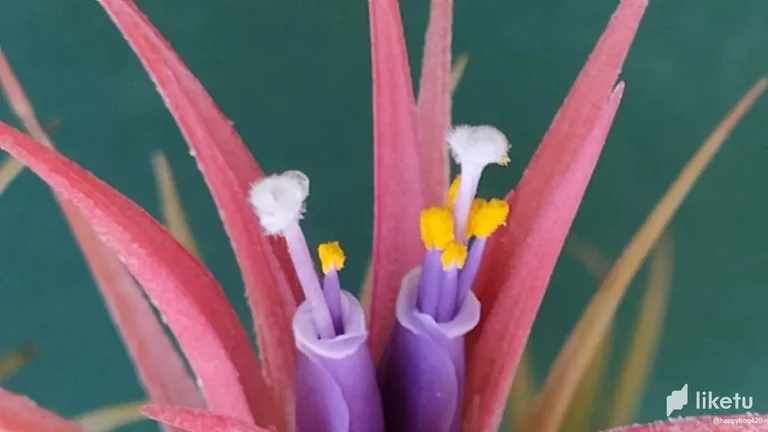
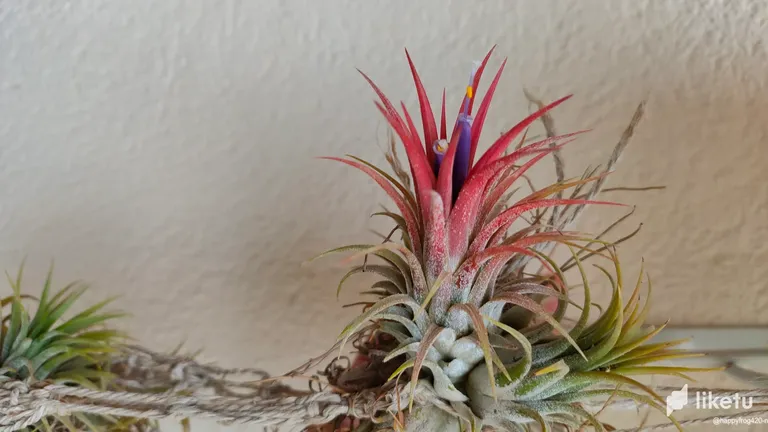
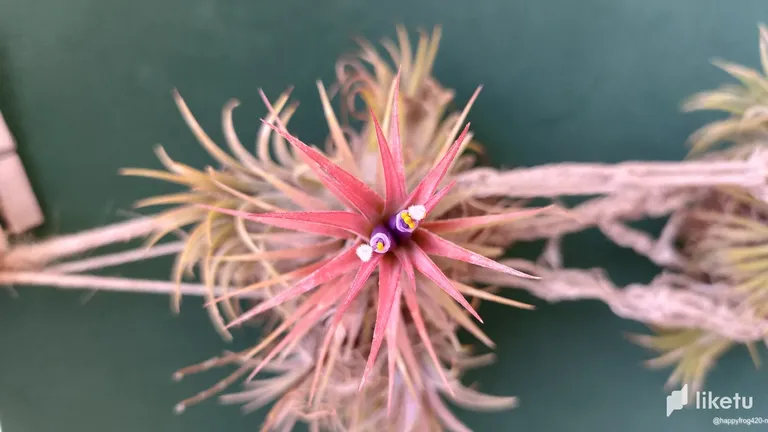
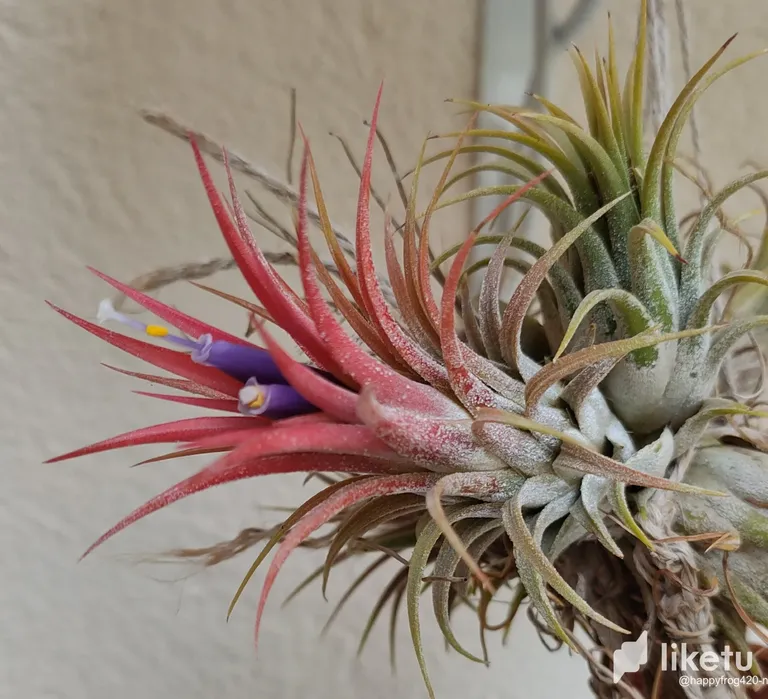
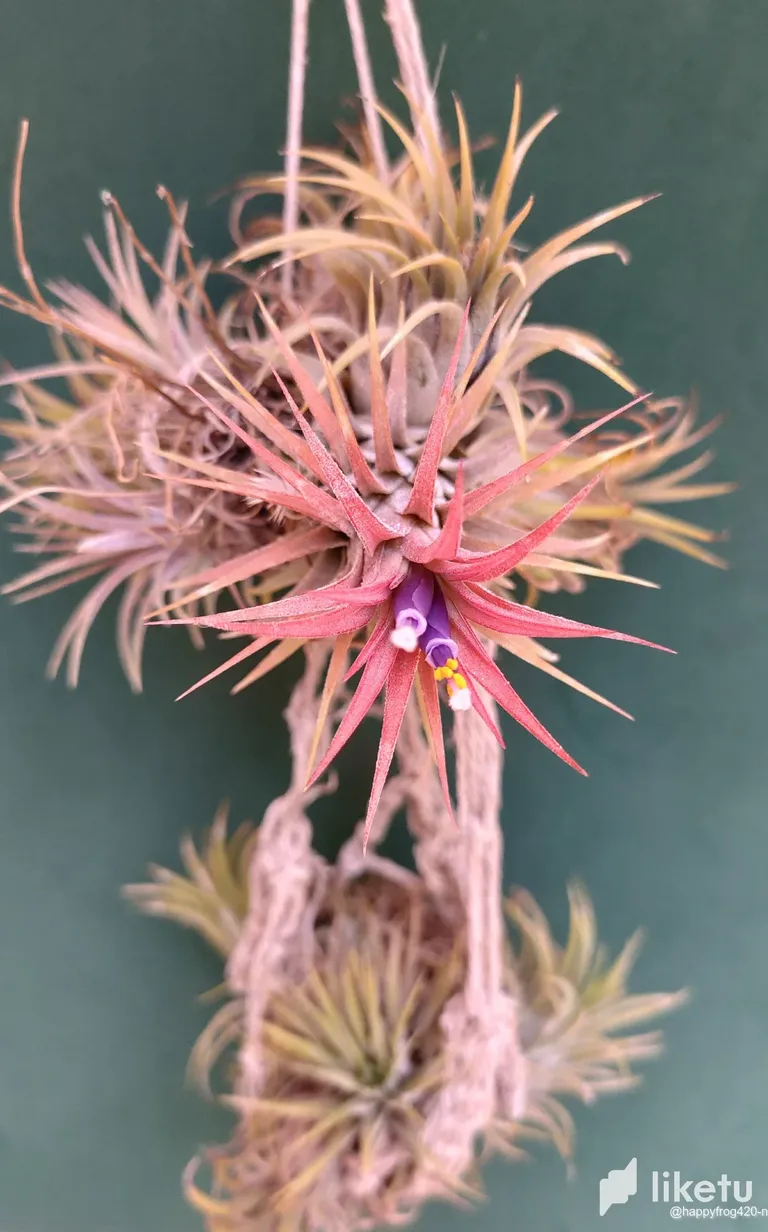
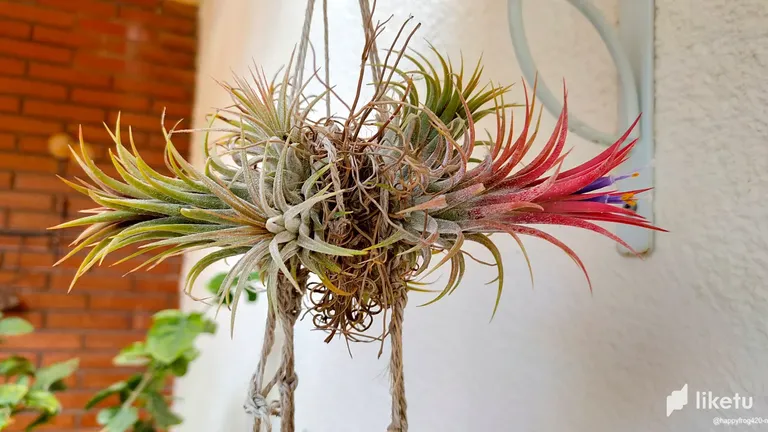
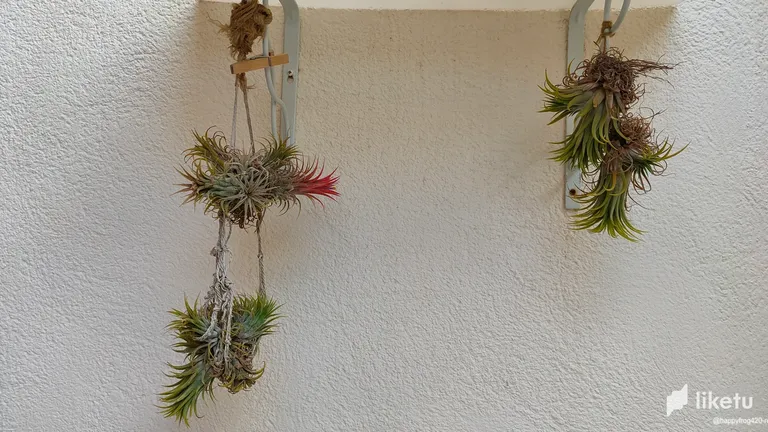
When we decide to incorporate a new plant to the terrace, one of the first things we look at is, if it will need a lot of care and if the climate where we live is suitable for them. We prefer plants that acclimatize well and do not require excessive care, mostly due to lack of time. Of all the plants we have on the terrace, I think the air carnation or Tillandsia is the one that requires the least care and has acclimatized the best. We do not water it, it does not need soil or pot and when it blooms it is a real spectacle.
We started buying three carnations 4 years ago and they have been reproducing until we have four groups formed by several carnations and they continue to grow. What does not seem normal to me is that at the gates of winter they continue to bloom after having already bloomed in summer.
When they are not in bloom, they have an inconspicuous green color, but when they bloom, their leaves turn a very striking red color. The flower has some colors that I have tried to capture with the phone as best I could. It is one of the most grateful plants I know.
I hope you liked it and see you next time.
Translated with www.DeepL.com
Cuando decidimos incorporar una nueva planta a la terraza, una de las primeras cosas que miramos es, si necesitará muchos cuidados y si el clima donde vivimos es adecuado para ellas. Prefierimos plantas que se aclimaten bien y no requieran excesivos cuidados, más que nada por falta de tiempo. Pues de entre todas las plantas que tenemos en la terraza, creo que el clavel de aire o Tillandsia es la que menos cuidados requiere y mejor se ha aclimatado. No la regamos, no necesita tierra ni maceta y cuando florece es un auténtico espectáculo.
Comenzamos comprando tres claveles hace 4 años y se han ido reproduciendo hasta conseguir cuatro grupos formados por varios claveles y siguen creciendo. Lo que no me parece normal es que a las puertas del invierno sigan floreciendo después de haber florecido ya en verano.
Cuando no están en floración, tienen un color verde poco llamativo, pero cuando florecen se ponen las hojas de un color rojo muy llamativo. La flor tiene unos colores que he intentado captar con el teléfono lo mejor que he podido. Una de las plantas más agradecidas que conozco.
Espero que te haya gustado y hasta la próxima publicación.
For the best experience view this post on Liketu
https://twitter.com/1134506884399083520/status/1602015189880430592
The rewards earned on this comment will go directly to the people( @happyfrog420-new ) sharing the post on Twitter as long as they are registered with @poshtoken. Sign up at https://hiveposh.com.